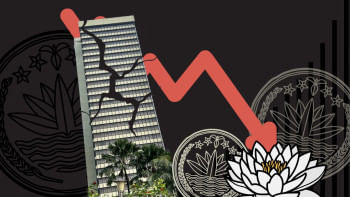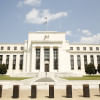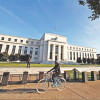The free fall of Silicon Valley Bank

For nearly 40 years, Silicon Valley Bank (SVB) was heralded as the go-to bank for startup companies sponsored by venture capital funds. SVB was the 16th largest bank in the United States and the lender-of-choice for many young firms in California's technology (tech) sector, the so-called tech hub in the country. All that changed when it collapsed on March 10, an event that captured headlines across the globe. This is the biggest bank failure in the US since the 2008 financial crisis. What happened to the 40-year-old bank that was so highly regarded among all stakeholders in America's tech sector?
Understanding the chain of events that led to SVB's demise requires some historical perspective. Following the onset of the pandemic, the American tech sector experienced a meteoric rise in capital inflow, owing to the increase in demand for more digital services as everything moved online. Flush with capital from venture capital funds during this low interest rate environment, many tech companies deposited their large influx of cash into SVB. In other words, SVB's deposits became over-reliant on large commercial deposits. While a concentrated depositor base is not unheard of, it is inherently riskier since fewer entities would need to pull their money out before the bank faced liquidity and solvency problems.
What could SVB do with this bonanza of deposit inflow? Without a sufficiently large number of corporate clients to lend to, SVB did what any bank would do: it poured all that excess liquidity into government-backed treasury bonds and mortgage securities. In fact, at the end of 2022, around $117 billion of SVB's portfolio comprised these securities. That's nearly 60 percent of its entire assets.
But what are the benefits and costs of investing in these bonds? The advantage is that they have low default risks. The cost is that their returns are relatively low and, more importantly, their prices are sensitive to changing interest rates. The latter is what proved to be SVB's Achilles' heel. Even a student of Economics 101 can tell us that when interest rates rise, the price of these low-yielding bonds would fall since new bonds will offer more attractive returns. Given such a large investment in interest-rate-sensitive securities, one must wonder why the bank did not hedge this risk.
SVB's heyday came to an end as the US Federal Reserve began raising short-term interest rates to tackle historically high inflation. Venture capital funds received a lower influx of capital from all types of investors due to two reasons: the looming threat of a recession, and a growing near-term uncertainty surrounding the tech industry.
SVB's likely strategy with these available-for-sale bonds was to wait for a time when interest rates are sufficiently low, so that the value of these bonds exceeds their cost, thus allowing for a profit. Or perhaps CEO Greg Becker got a bit too greedy and chose not to pay the cost of hedging, and hoped their depositors would always remain true to them.
This mistake proved costly. SVB's heyday came to an end as the US Federal Reserve began raising short-term interest rates to tackle historically high inflation. Venture capital funds received a lower influx of capital from all types of investors due to two reasons: the looming threat of a recession, and a growing near-term uncertainty surrounding the tech industry.
Consequently, venture capital funds supplied lower capital to many companies that happened to be SVB's biggest depositors. Not surprisingly, these startup companies began to pull out their deposits from SVB to meet routine operations – an effect that was amplified due to rising inflation. As deposit withdrawals spiked sharply, SVB was forced to sell a large share of their government securities at steep losses since they did not have enough cash on hand to pay their depositors.
This was the final nail in the coffin. Many of the remaining depositors naturally became concerned about the bank's solvency and overall financial health, leading to another wave of deposit withdrawals. As many commercial depositors withdrew their funds from the bank simultaneously, the bank experienced what economists often call a "bank run." With no other choice, regulators shut the bank down and took control to mitigate the damage and stop the contagion from spreading across the financial system.
The drama hardly ended there. Two days later, on March 12, frightened investors pulled their money out of Signature Bank, which had large amounts of deposits from the cryptocurrency sector. What would have been very hard to believe even a week ago, quickly became reality: the US saw a second bank run in the space of three days, leading regulators to shut down Signature Bank barely 48 hours after SVB. It's small wonder that bank stocks have been tumbling ever since, with financial experts predicting that we may not have seen the end of bank shutdowns just yet.
The fall of SVB raises important questions. The first question is whether higher interest rates are the main culprit. Indeed, a lot of commentators believe that aggressive monetary tightening by the US Federal Reserve was the key reason. If higher interest rates are the biggest factor, we should not see bank failures during periods when rates remain low and unchanged. For example, between 2012 and 2015, short-term interest rates (federal funds rates) in the US remained flat and close to zero percent. During the same period, there were 101 bank failures in the US, according to the Federal Deposit Insurance Corporation. All of these were much smaller banks than SVB and hence did not draw as much attention. Ultimately, bank success or failure boils down to proper risk management given its preferred business model.
The second question relates to the current regulatory architecture governing the US banking system. Owing to its relatively smaller size, SVB was not subject to some of the toughest regulatory requirements that the largest banks are. At present, the toughest capital and liquidity requirements have to be met by banks whose assets are larger than $250 billion. Specifically, the largest banks need to have enough high-quality liquid assets to meet 30 days of unexpected net cash outflows.
SVB faced a more relaxed requirement. This is not necessarily an obvious solution, because there is always a trade-off to tougher regulatory requirements. On the one hand, tougher liquidity requirements means a bank is less likely to face a run by depositors. But on the other hand, it also means a bank can extend fewer loans to truly viable businesses that hire employees from different income groups. This has implications for competition and fair pricing of loans, which ultimately affects ordinary borrowers.
One lesson is clear: there should be greater scrutiny of depositor concentration risk, which dictates funding stability. Much of the existing focus on understanding banking sector health is on the asset side of a bank's balance sheet – i.e. the loans it makes to various companies, and the associated credit risk. There is much less focus on a bank's liability side – i.e. the deposits it receives.
Finally, how will this episode affect the US economy as well as the global banking system? Some overseas spillover effects are already visible from the fall of European bank Credit Suisse, although their demise primarily came from years of scandals and mismanagement. A key trend we are observing is that many ordinary depositors in the US are withdrawing their money from relatively smaller and regional banks and allocating it to the biggest banks in the country, since those are perceived to be safer. Moreover, greater regulatory pressure might slow down credit growth and, by extension, economic activity. Overall, the SVB experience has increased investors' risk aversion and reduced confidence in the banking system, which could also weigh in on near-term growth.
Dr Sharjil Haque is an economist based in Washington, DC. Views expressed in this article are his own and do not necessarily reflect the views of any institution he is affiliated with.

 For all latest news, follow The Daily Star's Google News channel.
For all latest news, follow The Daily Star's Google News channel. 










Comments